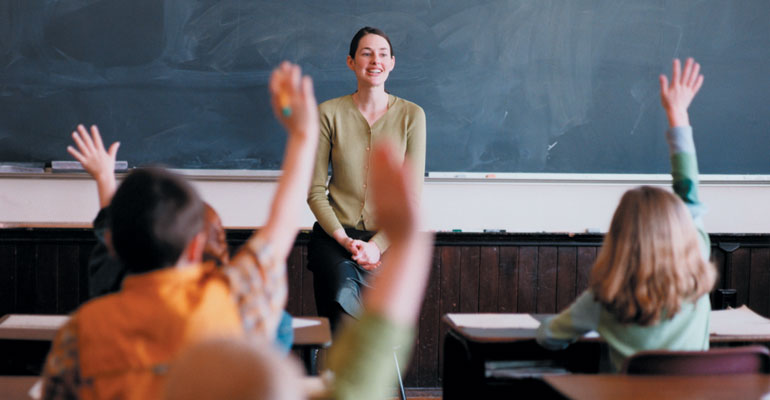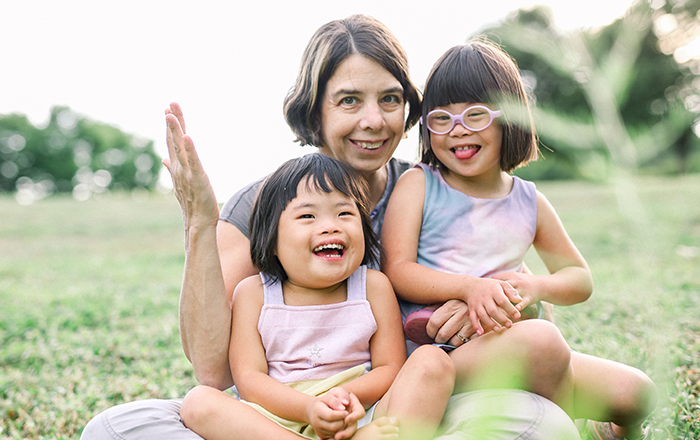Many of us have made adoption presentations to our young children’s classes. But what can we do once they get older? Last fall, when my son was in fifth grade, I decided it was time to develop an adoption education program for older children as part of a schoolwide effort for National Adoption Awareness Month.
My friend Katherine, a fellow parent at Cold Spring Elementary School in New Haven, Connecticut, and I first met with the school director to propose adoption education activities in November. We knew that as many as ten percent of the students at the school were adopted. To counter any concern that individual children might feel singled out as we discussed adoption,we were careful to emphasize that we would not focus on any single child or group of children. Instead, we identified three goals: to discuss adoption as a social issue, to encourage appreciation of family diversity, and to begin a conversation about adoption as one way to build a family. To inform the entire school community about upcoming National Adoption Awareness Month, and to invite the involvement of other parents, we ran a weekly notice in the school’s newsletter throughout October announcing the adoption program.
Both the school director and the classroom teachers were very enthusiastic when we met to plan our presentations. One teacher decided to integrate the adoption theme into her math curriculum. Using information about adoption that they researched, her students created computer-generated bar graphs and pie charts displaying adoption statistics.
After some thought, we developed three different programs according to the age of the children and the teacher’s curriculum plans. For kindergarten through second graders, Katherine and I planned to visit each classroom twice in November to talk with the students about what adoption is, read stories, and show a video. The third grade teacher and I decided that I would make an introductory presentation to her class in November, and then return in the spring during the class study of families.
For the older students, those in fourth through sixth grades, we agreed upon an approach that would allow more depth: an introductory presentation in each class to be followed a week later by a panel discussion in which an adoptive parent, a birth mother, and an adoptee would talk with all the classes together. My goal was to provide the older students not only more depth, but also a more experiential discussion as well as the opportunity to ask all the questions they might have. I thought it important that they learn through this activity that adoption is not a taboo topic but one that’s discussed openly. Initial concerns about offering a panel presentation to students so young were alleviated by the enthusiasm of the teachers and parents. And my son thought it was a terrific idea! Still, I felt that for students of this age to benefit from a panel presentation, they needed preparation—an introduction to the topic, a chance to reflect upon their own knowledge and beliefs, and familiarity with the terminology of adoption so as to voice their questions effectively.
Presenting Adoption to 10-Year-Olds
In the initial fourth through sixth grade classroom meetings, my talk took the form of adoption questions which I wrote out in large print and displayed as a guide. I began, as I had with the lower grades, by explaining that National Adoption Awareness Month came about because the U.S. Congress decided that adoption is an issue worthy of special focus and national educational efforts.
Then I asked each question of the class, and after the students responded, I expanded upon their answers as needed. Abbreviated versions of the answers we developed follow. I hope other parents use these, as we did, as a foundation from which a rich discussion can grow.
1. What is adoption? Adoption is when one or two adults become the parents of a child (or children) who is not their biological child. It’s the formation of a permanent family, and a judge in a court legalizes the relationship.
2. Who are the members of the “Adoption Triad”? The adopted child, the birth mother and/or birth father, and the adoptive parent(s).
3. What is clear and respectful terminology for talking about adoption and the people involved? For birth parent(s), we use birth mother/father or biologic mother/father, and for the adoptive parent(s), adoptive mother/father, or simply mother/father. We avoid words like “real” and “natural” because all people are real, and because for some people to be called “natural” implies that others are unnatural. We say that a birth mother or birth parents “made an adoption plan,” “chose adoption,” or “placed the child for adoption.” We avoid “gave up,” “put up,” and “gave away” because these words are used to talk about objects, and children are not objects, they are human beings. Children who were adopted are their adoptive parents’ “own children.”
4. What is the process of adoption? Adults don’t suddenly decide to adopt and pick out their child, like going shopping. There is a long process, which can take a year or more and is designed to protect the child by ensuring that the parent is a good parent and will provide a good home. Prospective parents are interviewed by social workers, and they also have a medical exam. The police department checks to see that they don’t have a criminal record, and child protective services makes sure that they don’t have a record of child abuse or neglect. Their home is inspected to make sure it is clean and safe, and their employers attest that they are financially capable of taking care of a child. When the prospective parents are considered qualified, they are given a license by the state. In some adoptions, the birth mother or birth parents choose the adoptive parents. In other adoptions, the birth parents are not directly involved.
5. Who can adopt? Who can be adopted? One woman, one man, a woman and a man, two women, or two men can adopt a child. The child who is adopted can be a newborn or of any age.
6. What are the reasons adults adopt children? Adults may adopt children because the adult is unable to conceive or give birth to a child, because a pregnancy would endanger the mother’s health, because the adult wishes to expand their family through adoption, or for a variety of other reasons.
7. What are some of the reasons adults place children for adoption? Birth parents believe that their child could have a better life in an adoptive family. There may be many reasons for this, including lack of financial resources, lack of support from family and friends, not being mature enough to parent, or being in poor health.
8. How are adoptive families different from biologic families? The main difference is that the child is not genetically realted to his parent or parents. The child may have entered the family after infancy, or may be of a different race or nationality than one or both parents.
9. How are adoptive families the same as biologic families? Parents in both families are responsible for the children until they are grown up. Adoptive families enjoy doing things together, grow and change over the years—just like biologic families. Both adoptive and biologic families are formed by love, and love is the “glue” that holds every family together.
10. How many children currently growing up in the U.S. were adopted? There are approximately 1.5 million children under 18 years old in the U.S. who were adopted. Approximately 100,000 children are adopted each year. Sixty percent of all Americans have a personal connection to adoption.
The fifth and sixth grade discussions were especially lively; the students were full of energy, questions, and comments. After our discussion, I told each class about the next week’s panel discussion and guest speakers, clarifying what a panel discussion is, and emphasizing that the benefit of that session would depend on their questions. I suggested that students write down their unanswered questions, so they could ask them the following week.
The Panel Discussion
The panelists—two adults adopted as infants, an adoptive father, and a birth mother—were friends of Katherine’s or mine. They sat at tables decorated with colorful tablecloths and fresh cut flowers, and I served as the moderator. The students’ graphs of adoption statistics were displayed on the walls. In addition to the students and teachers, a few parents and the director of the school also attended. I began by restating basic adoption statistics. Next, I introduced the panelists. To break the ice, I held my hand above each panelist’s head and asked the audience to shout out that person’s name.
The panelists briefly described their connection to adoption and showed photographs of their families. I encouraged the students to ask any question about adoption and said that if a panelist felt that a question was too personal, he or she would say so. The children’s questions were insightful, and, after our previous discussion about adoption terminology, they chose their words carefully. The exchanges were open and warm; the room rang with laughter. The questions kept coming, and after an hour, I ended the discussion and thanked the panelists, who were enthusiastically applauded.
In subsequent weeks, I received a steady stream of positive feedback from students, teachers, parents, and the panelists. It was a privilege to witness so many hearts and minds opening to the world of adoption.



